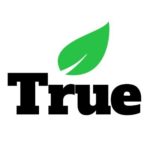Resources ($) spent treading water
Transforming legacy technology remains a difficult proposition. A lack of historical expertise by current stakeholders is one impediment, as is transparency of soft costs within the technology budget. The full expenses of legacy infrastructure can remain hidden until confronted with a significant technology outage, or the sudden increase in the cost of maintenance. The average costs and resources of maintaining legacy systems and application averages approximately 30% of an organization’s IT budget, which include:
- Maintenance
- Talent (Human capital)
- Internal and external compliance (i.e. GDRP, etc.)
- Risk; Security threats and trends
- Agility, scalability and stability
One of the most important factors in dealing with transforming legacy technology is facing the reality of your organization’s culture and alignment.
Where to start…
Begin by drawing a line around your monolithic systems, code and infrastructure. Often companies believe they must reengineer all their legacy systems from the ground up. This is a common error, however, it is critical to delineate which portions of the system can be inoculated or identified as ‘core’ and then build API or structures around that “core”.
Develop an integration strategy and then construct an integration layer. This means some code will be written from the foundational or infrastructure level, then to the database layer and finally to the user experience environment. It is critical to identify those systems which can be detethered and then “frozen”. This facilitates a phased integration approach, upon which additional functionality can be layered. Depending on the complexity of legacy architecture, these changes may be cost prohibitive, and so the ability to isolate, freeze and use a layered-build approach is an appropriate solution. This will permit an organization to stabilize their applications code and then build APIs or other integration layers around ‘frozen’ areas of the technology stack. In some circumstances, Block-chain can be very useful in providing a fast and simple way to place in an integration layer within the legacy or ‘frozen’ environments.
Missing Link
The most important component of transformation and innovation is the people within the organization, not the technology or skillsets around the technology. Industry studies indicate a potential for 20-30% increase in productivity and creative thought if the individuals are engaged and aligned with the organization’s goals, and the change processes align with individual goals and performance. All departments and stakeholders must be in alignment from product, QA, development, and infrastructure to the end users. This is the most important aspect of any technology transformation initiative; creating a safe and collaborative environment to facilitate “creative dissent’.







